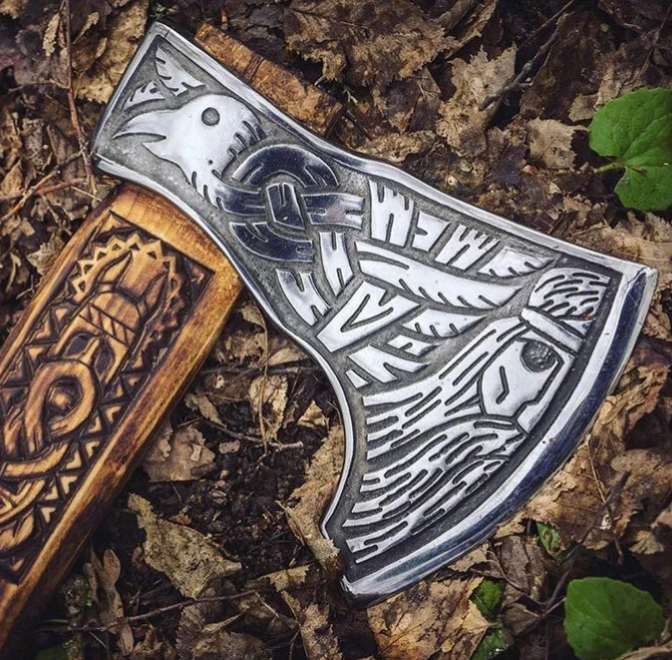The Viking Age was a fascinating period in history, filled with tales of brave warriors and epic battles. One of the most iconic weapons of the Vikings was the axe. These fearsome weapons were not just tools of war, but also symbols of power and status. In this article, we will delve into the history of Viking axes and explore their significance in Viking society.
The use of axes in combat predates the Viking Age, but it was during this time that the Vikings perfected the art of axe warfare. Viking axes were typically single-handed, with a short handle and a heavy, wide blade. This design allowed for quick and deadly strikes, making them highly effective in close-quarters combat.
But the Viking axe was not just a weapon of war. It was also an essential tool for daily life. Vikings used axes for a variety of tasks, such as cutting down trees, building ships, and even as agricultural tools. These versatile tools were an integral part of Viking society, and their importance cannot be overstated.
The design of the Viking axe evolved over time, with regional variations emerging throughout the Viking world. For example, the Dane axe, also known as the Danish axe, was a two-handed weapon with a massive blade. This weapon was used by the elite warriors known as huscarls, who served as personal bodyguards to Viking chieftains.
Another notable variation is the bearded axe, which gets its name from the elongated lower blade resembling a beard. This type of axe was particularly popular among the Vikings and was often adorned with intricate carvings or engravings. The bearded axe was not only a formidable weapon but also a symbol of wealth and social standing.
In addition to the design variations, Viking axes were often decorated with elaborate patterns and symbols. These decorations were not just for aesthetic purposes; they also served a practical function. The patterns and symbols helped to improve grip and control, making the axe easier to handle during combat.
The significance of Viking axes extended beyond the battlefield. They were also used in religious ceremonies and rituals. Sacrificial ceremonies were an important part of Viking religious practices, and axes were often used to execute sacrifices. They were seen as a sacred weapon, capable of bridging the gap between the mortal and divine realms.
Today, Viking axes continue to captivate our imagination. They are a symbol of the Viking Age and a testament to the craftsmanship and skill of the Norse people. Museums all over the world display Viking axes, showcasing their intricate designs and rich history.
In conclusion, the Viking axe holds a special place in history. It was more than just a weapon; it was a tool that shaped Viking society. From their use in warfare to their role in daily life and religious ceremonies, Viking axes are a true testament to the ingenuity and resilience of the Viking people. So the next time you see a Viking axe, remember the incredible history and legacy behind this iconic weapon





